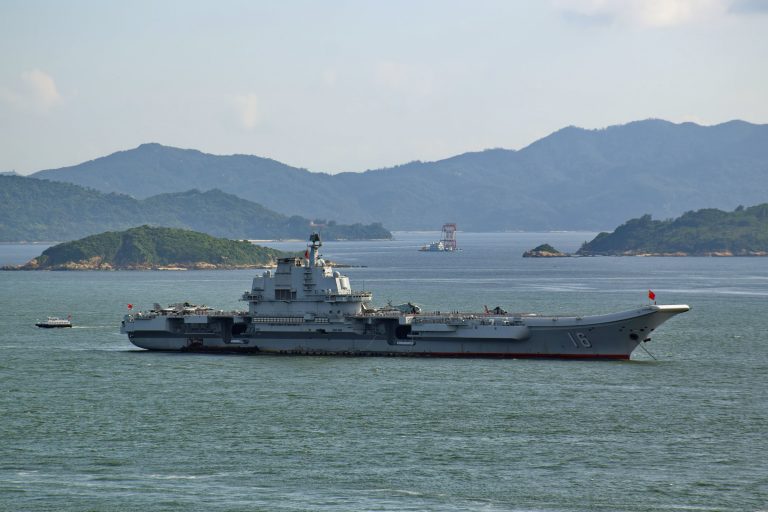
The imbalance of forces between China, which already has the world’s biggest navy in its backyard, and that of the United States, which needs to surge additional forces across the vastness of the Pacific, was put into sharper focus Tuesday at a Senate Armed Services Committee hearing.
Sen. Roger Wicker, a Mississippi Republican, noted that by 2025, China is expected to have three aircraft carriers to the United States’ one stationed in the western Pacific.
China will have six amphibious assault ships, compared with two for the U.S. Multiwarfare combat ships such as destroyers will have a much greater gap : 54 for China and six for the U.S. China’s navy has tripled in size over the past two decades.
Adm. Phil Davidson, head of U.S. Indo-Pacific Command on Oahu, said the disparity reveals the “relative static nature of our own forward-positioned forces, ” adding that “if we don’t make changes in our posture forward, it will demonstrate that the Chinese have much greater capacity than we have.”
Davidson, who testified on Indo-Pacific Command’s status in the region, recently delivered to Congress a $27.3 billion request for extra funding through 2027 called the Pacific Deterrence Initiative.
China could soon be emboldened to try to “forcibly change ” the existing order in the western Pacific, Davidson told a think tank last week.
As its rapidly advancing military approaches “overmatch ” with the U.S. in the region, and absent a convincing deterrent, China could make a move this decade, he said.
On Tuesday he gave that statement more context as China bristles at any notion of Taiwanese independence.
“I worry that they (China ) are accelerating their ambitions to supplant the United States and our leadership and the rules-based international order—which they’ve long said they want to do that by 2050, ” Davidson said. “I’m worried about them moving that target closer.”
Taiwan, he added, “is clearly one of their ambitions before then, and I think the threat is manifest during this decade—in fact, in the next six years.”
The Pacific posture hearing was devoted mainly to the threat posed by China in the western Pacific, but a 41-page prepared statement included discussion of other actors in the region, including North Korea.
Davidson gave greater credence to having either ship-or shore-based interceptor missiles in Hawaii to defend against North Korean intercontinental ballistic missiles, saying 2021 funding for the planned $1.9 billion Homeland Defense Radar-Hawaii “supports the best-programmed solution to enable a credible, in-depth under-layer defense for our forces in Hawaii.”
The Pentagon’s 2019 Missile Defense Review said the relatively new SM-3 Block IIA interceptor will be part of a regional missile defense architecture and also has the potential to provide an important “underlay ” to existing big ground-based interceptors in Alaska and California.
Sen. Mazie Hirono of Hawaii recently noted that while the Missile Defense Agency chalked up a successful ICBM test intercept with the SM-3 IIA missile in November, “that system is but a part of the layered missile defense system MDA is currently fielding to defend Hawaii against threats in the region—including (the Hawaii radar ) upon its completion.”
The Missile Defense Agency last year said the Aegis Ashore Missile Defense Text Complex on Kauai could be temporarily activated with SM-3 IIA missiles in the event of a national emergency for greater protection of Hawaii.
The Pacific Deterrence Initiative was approved last year to plug capability gaps and was funded with $2.2 billion for fiscal 2021.
A total of $4.6 billion is sought in 2022.
The initiative “provides the foundation to establish a forward-deployed force-in-depth posture ” that defends the U.S. homeland, deters aggression, assures allies and partners, and provides “flexible response options should deterrence fail, ” Davidson said.
The U.S. is developing a strategy to integrate all its forces and rapidly deploy troops to islands in the western Pacific with advanced missiles to counter China’s navy.
Paul van Hooft, a senior strategy analyst at The Hague Centre for Strategic Studies, recently wrote that the United States should give up its quest for command of the maritime commons in the western Pacific.
The “tyranny of distance ” that U.S. forces have to travel makes them particularly vulnerable to Chinese efforts aimed at raising the cost of access, van Hooft said in the online publication War on the Rocks.
“Instead, the United States should, together with its allies and partners, focus on denying China command of the Pacific maritime commons, ” van Hooft said. “It is cheaper and easier to deny command of the seas than to exercise it.”
China would be forced to accept the status quo or “make a first move in which it overextends itself, ” he said.
Regional allies and partners could be given access to precision weapons to build defensive bubbles, which would “present Chinese officials with multiple problems to solve rather than one large one, ” van Hooft said.
___
(c) 2021 The Honolulu Star-Advertiser
Distributed by Tribune Content Agency, LLC.
0 comments :
Post a Comment